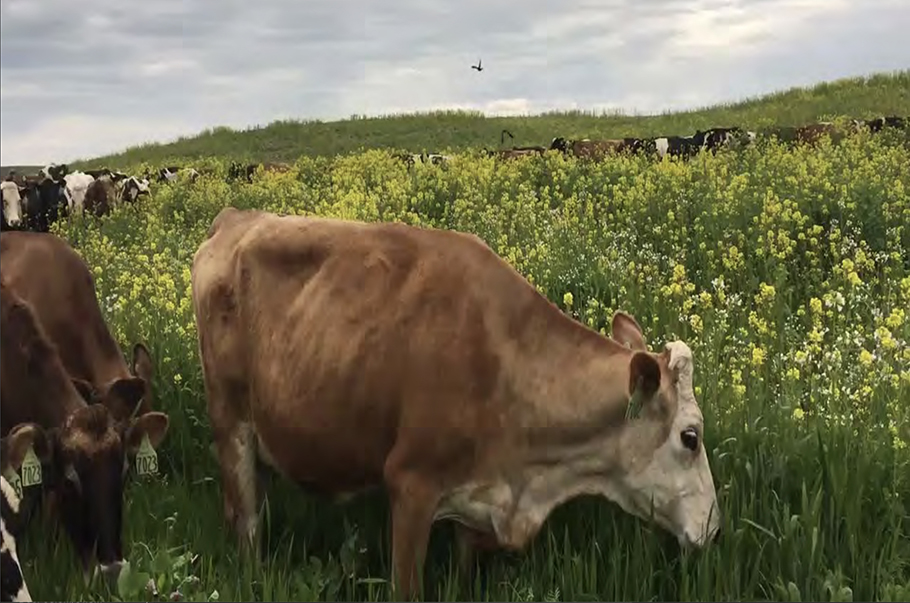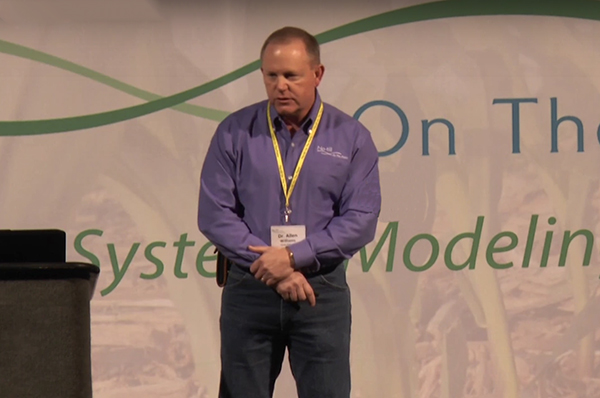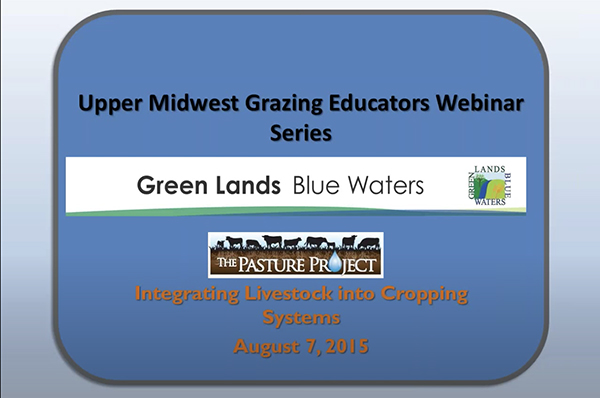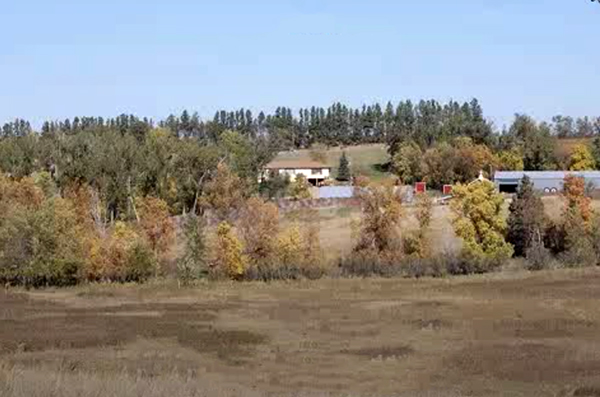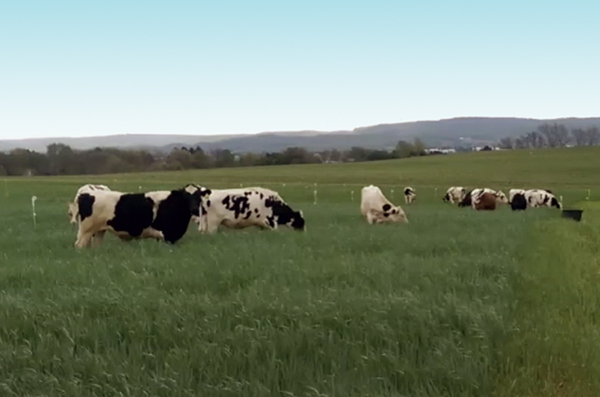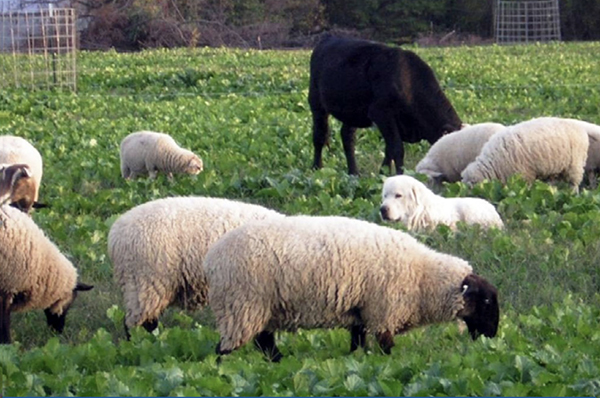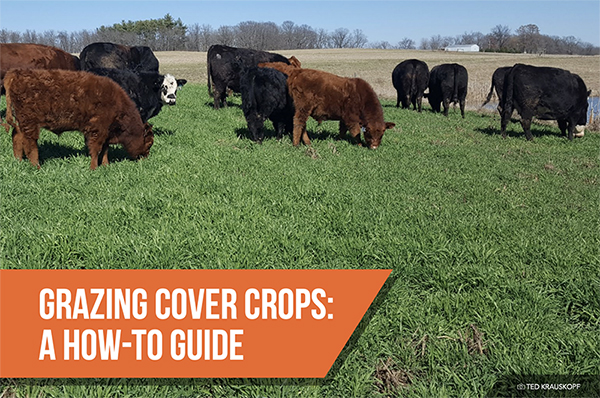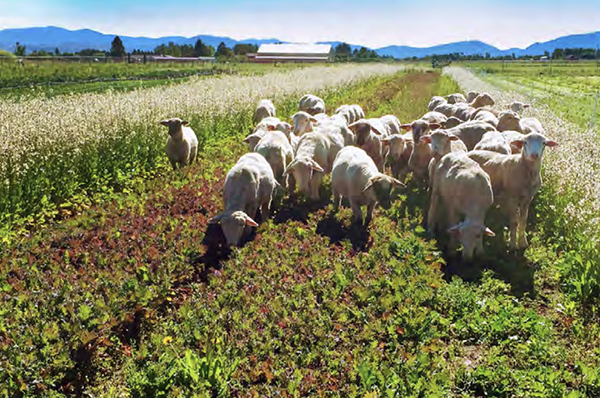
Livestock and Crop Integration
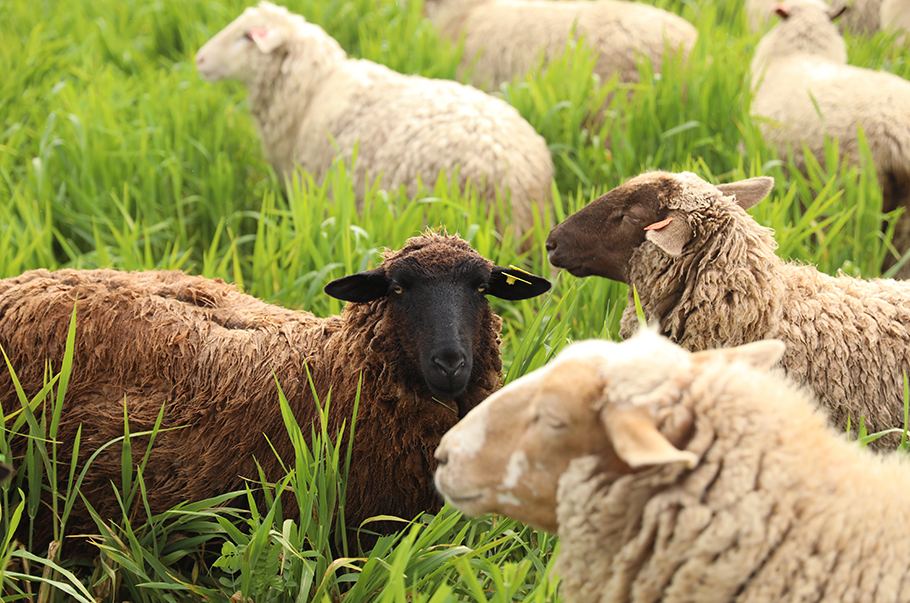
Although raising livestock and crops together used to be the norm, in the United States farm production has shifted to increased specialization because of presumed management efficiency. Considerable research, however, has found that reintegrating animals into crop production systems yields considerable benefits in improved soil health, reduced risks associated with raising a single product, reductions in fertilizer input and animal feed costs, reduced labor and machinery costs, and increased carbon sequestration. Grazing cropland improves soil fertility by increasing soil microbial density and organic matter due to the addition of manure. It can also provide significant benefits for farmers who use cover crops and no-till methods as the animals can graze the cover crops while lightly integrating their manure into the soil with their hooves. Managed grazing and crop rotation techniques work best with this approach to avoid over-compaction of the soil.
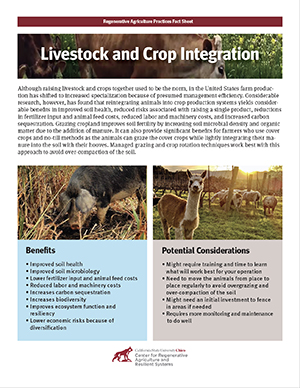
Download a printable fact sheet based on this page (PDF).
Go to:
Mentor Farmers Who Discuss Livestock Integration
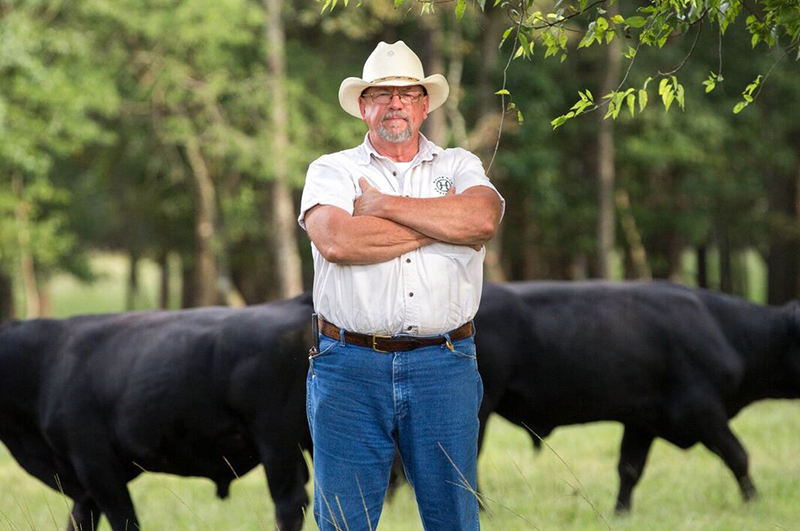 Will Harris, White Oak Pastures(opens in new window)
Will Harris, White Oak Pastures(opens in new window)Tablas Creek Vineyards(opens in new window)
Gabe Brown, Brown’s Ranch(opens in new window)
Burroughs Family Farms(opens in new window)
Massa Organics(opens in new window)
Paul Muller, Full Belly Farm(opens in new window)
Nathanael Siemens, Fat Uncle Farms(opens in new window)
Paicines Ranch(opens in new window)
Allen Williams(opens in new window)
Videos
Grazed Cover Cropping—Drew Leitch
Farmer to Farmer Case Study from Washington State University
Strip Tillage of Vegetables with Livestock Integration—Eric Williamson
Farmer to Farmer Case Study from Washington State University
Scientific Literature
Acosta-Martinez, V., Bell, C.W., Morris, B.E.L., Zak, J., Allen, V.G., 2010. Long-term soil microbial community and enzyme activity responses to an integrated cropping livestock system in a semi-arid region.(opens in new window) Agric. Ecosyst. Environ. 137, 231–240.
Asai, M., Moraine, M., Ryschawy, J., Wit, J.D., Hoshide, A.K., & Martin, G. (2018). Critical factors for crop-livestock integration beyond the farm level: A cross-analysis of worldwide case studies.(opens in new window)
Bansal S, Chakraborty P, Kumar S. Crop-livestock integration enhanced soil aggregate-associated carbon and nitrogen, and phospholipid fatty acid(opens in new window). Sci Rep. 2022 Feb 17;12(1):2781. doi: 10.1038/s41598-022-06560-6.
Brewer, Kelsey M., Muñoz-Araya, Mariana, Martinez, Ivan, Marshall, Krista N., Gaudin, Amélie CM. Long-term integrated crop-livestock grazing stimulates soil ecosystem carbon flux, increasing subsoil carbon storage in California perennial agroecosystems(opens in new window), Geoderma,Volume 438,October 2023
Clark, Sean & Gage, Stuart. (1996). Effects of free-range chickens and geese on insect pests and weeds in an agroecosystem.(opens in new window) American Journal of Alternative Agriculture. 11. 39 – 47.
Davies, Kirk & Bates, Jonathan & Svejcar, Tony & S. Boyd, Chad. (2010). Effects of Long-Term Livestock Grazing on Fuel Characteristics in Rangelands: An Example From the Sagebrush Steppe.(opens in new window) Rangeland Ecology & Management. 63. 662-669.
Garrett, Rachael & Niles, Meredith & Gil, J.D.B. & Gaudin, A & Chaplin-Kramer, Rebecca & Assmann, A,… Valentim, Judson. (2017). Social and ecological analysis of commercial integrated crop livestock systems: Current knowledge and remaining uncertainty.(opens in new window) Agricultural Systems. 155. 136-146.
Hoshide, A., Dalton, T., & Stewart, S. (2006). Profitability of coupled potato and dairy farms in Maine.(opens in new window) Renewable Agriculture and Food Systems, 21(4), 261-272.
Martin, G., Moraine, M., Ryschawy, J. et al. Crop–livestock integration beyond the farm level: a review.(opens in new window) Agron. Sustain. Dev. 36, 53 (2016). https://doi.org/10.1007/s13593-016-0390-x

